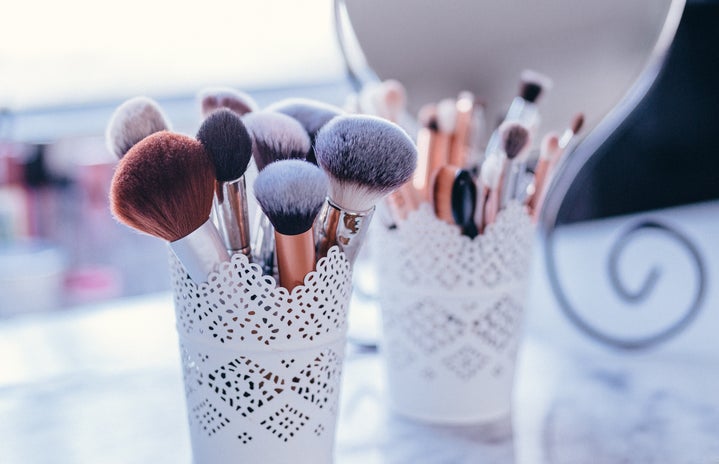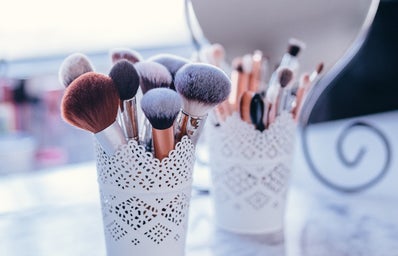Chocked full of the simplest ingredients such as aloe vera to the more unfamiliar ingredients such as ginseng (popular among many Asian cultures), propolis, caviar, and even gold. Korean beauty products are innovative from the ingredients all the way to the technology; it is no wonder Korean skin care has taken the world by storm.
An industry made infamous by BB cream, you’ve probably also heard of Korea’s notorious 5, 7 and even 10-step skin care routine, including products such as toners, serums, sheet masks, and the lesser known emulsions, essences and ampoules. With so much choice, the world of k-beauty might be a bit hard to navigate.
A skincare junkie myself, I’ve long had an affinity for Korean skincare. Being in Toronto, however, didn’t afford me many options. After a stint in Korea about a year ago, I purchased way more products than a girl could ever need (I still don’t regret a dollar spent) and I am here to share!
Here is a simplified list of the what’s-what for Korean products, followed by some of my picks that I’ve amassed through research, (the fun kind, if that’s possible) and my own trials!
1. Cleanse.
This a super key step in Korean skincare – and not just any cleanse. The “double cleanse” and foam cleansers are two big trends in the Korean beauty industry. The first is literally cleansing twice, first with an oil-based product, and then with a regular cleanser (coconut oil is an amazing pre-cleanse make-up remover.) Foamy cleansers are also seen as a gentle way to remove make-up and impurities without being hard on the skin.
My picks:
Some nights, after a long exhausting day, you’re probably not up for a double cleanse. But don’t worry! You’ll still get the double cleanse result with the Cue The Face Shop’s Mango Seed Oil to Foam cleanser (above left.) You’re supposed to apply this cleanser to your dry skin like an oil (its partially water based, so it won’t go on completely like an oil), massage it in, and then add water. It’s like a simplified two-step cleanse – without the two steps!
Innisfree’s Sea Salt perfect cleanser (above right) was an absolute fave in Korea! There was something about the humid weather and sometimes-polluted air (yellow dust) that made my skin oilier and more breakout-prone than it would be normally. This cleanser, purportedly with 20-40% sea salt (I chose the 40%), was a lifesaver!
2. Moisturize.
This is the biggest step of Korean skin care, often comprising of at least a couple – and as many as all of the following: toners, emulsions, essences, ampoules, serums, and eye creams.
To quickly break it down, a toner is like a light moisturizing refresher (sometimes even called a refresher) and adds moisture as well as extra cleansing if you do it with a cotton pad. Emulsions are like super light equivalents of “moisturizers” in North America, great for oily skin. Essences are extremely light, heavily water-based products (near water consistency) which are supposed to be concentrated with ingredients that address certain issues such as dryness or dull skin. Ampoules are quite similar in that they are also supposed to be very concentrated, but even more so than essences, and are closer to the texture of serums. Serums are just that – serums, but come in oil-based and water-based formulas (a bit different from the silicone-types you might be used to), perfect for different skin types. And regardless of age, eye cream is a very important step in the process to maintain youthful skin.
My picks:
Tony Moly’s Nutra-energy Emulsion (above left) has been a godsend for my skin; it doesn’t exacerbate my oily t-zone, and perfectly moisturizes those dry spots that creep up some winters. I also love Innisfree’s green tea serum (above right) for an added moisture/ nourishment boost at night!
3. The Extras.
Last, there are the extras. The sheet masks, sleeping masks, and nose packs are just a few of the non-daily parts of a routine.
In the case of sheet masks, whether it be thin cotton sheets or “hyrdogel” masks, are packed with ingredients that target acne, dryness, wrinkles, dull skin and more. These would commonly be used after the first moisturizing step. Sleeping masks on the other hand are masks you sleep in – they dry like moisturizers to add an extra moisture boost as the last step of your routine. Nose packs are like the Korean equivalent of nose strips (which they also have), but come in the form of a thick, often charcoal-enriched formula (also applied after your first moisturizing step.) These are great for any white and/ or blackheads around the nose (Tip! They’re also great for any trouble spots on your face).
My picks:
Missha’s nose pack (above left) has been great for any trouble spot on my skin. It does have its qualms – it took a bit of a trial to apply, and needs to dry completely for the easiest removal. But clear skin in one easy step definitely outweighs the few downsides! I’m a fan of all of The Face Shop’s masks (that I’ve tried), but bamboo (pictured above right) and aloe have been my faves for moisture and radiance!
Image Sources:
https://thefaceshop.ca/en/skin-care/product/cleanser/mango-seed-oil-to-f…
http://w2beauty.com/en/innisfree-cleansing/18149-innisfree-sea-salt-perfect-cleanser.html
http://eng.etonymoly.com/ext/bbs/board.php?bo_table=skin_care&wr_id=264#…
http://www.innisfree.co.kr/ProductView.do?prdSeq=9741&catCd01=LK&catCd02=UACC
https://thefaceshop.ca/en/mask/real-nature-mask-bamboo
http://www.misshaus.com/black-ghassoul-peel-off-nose-pack.html

